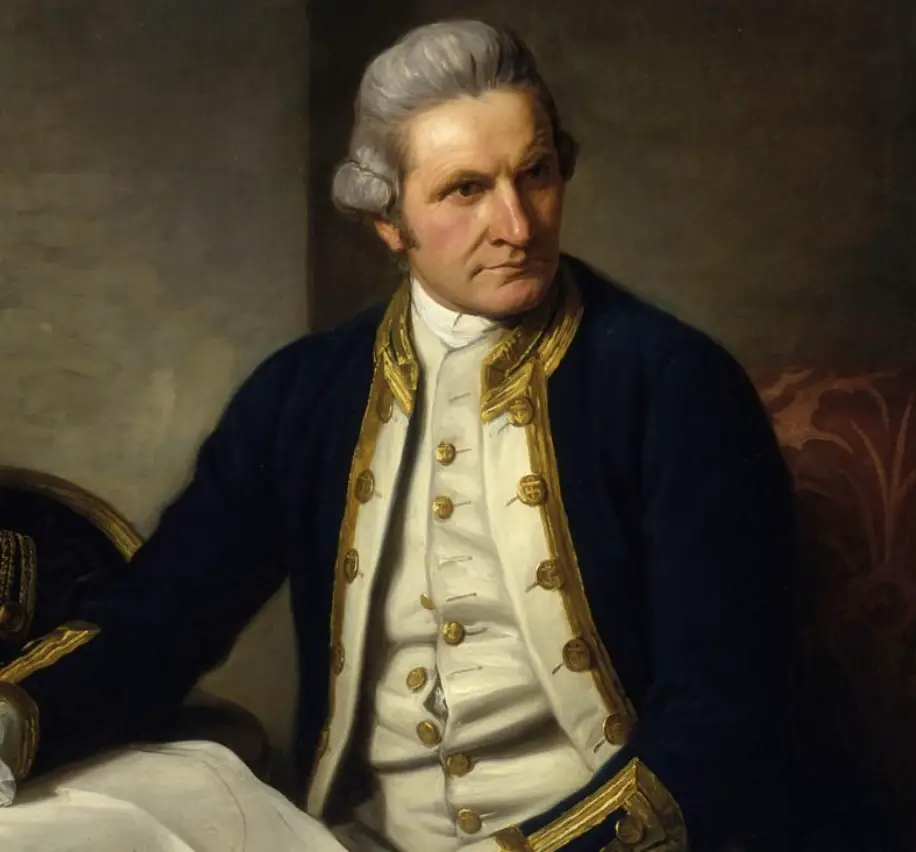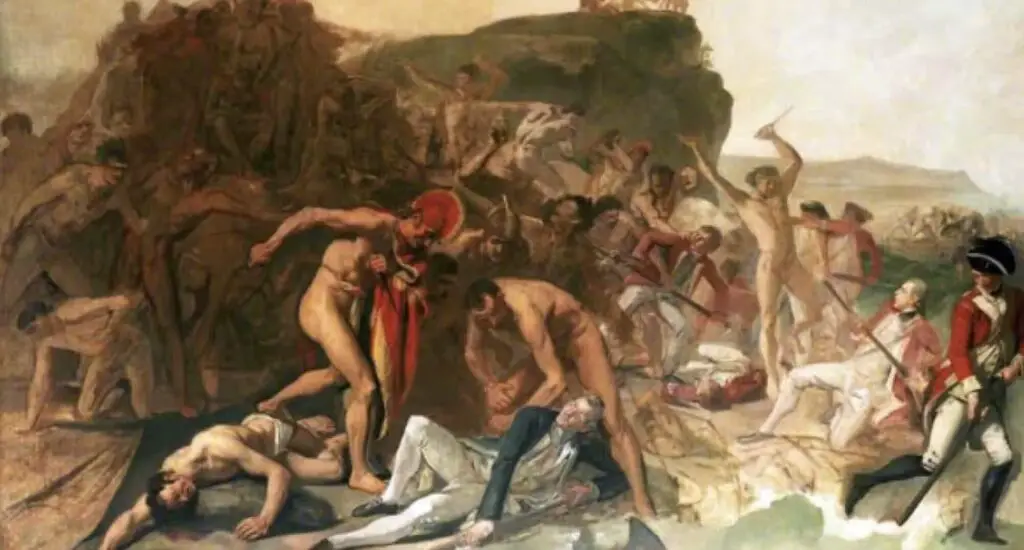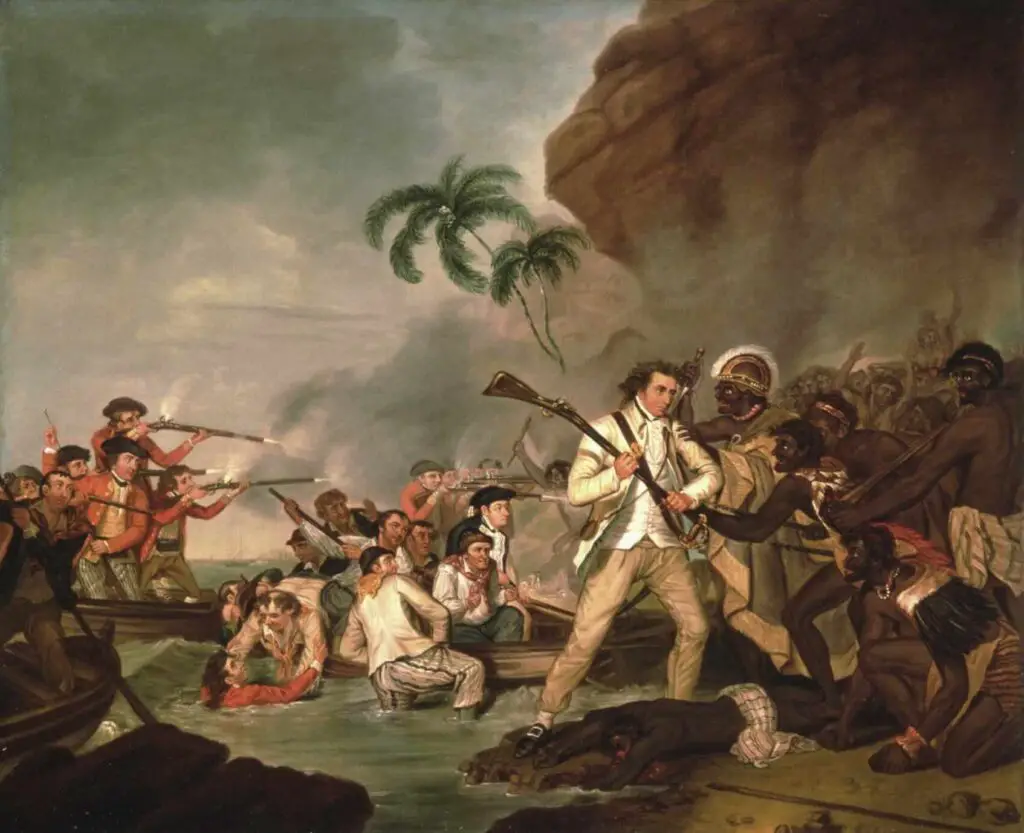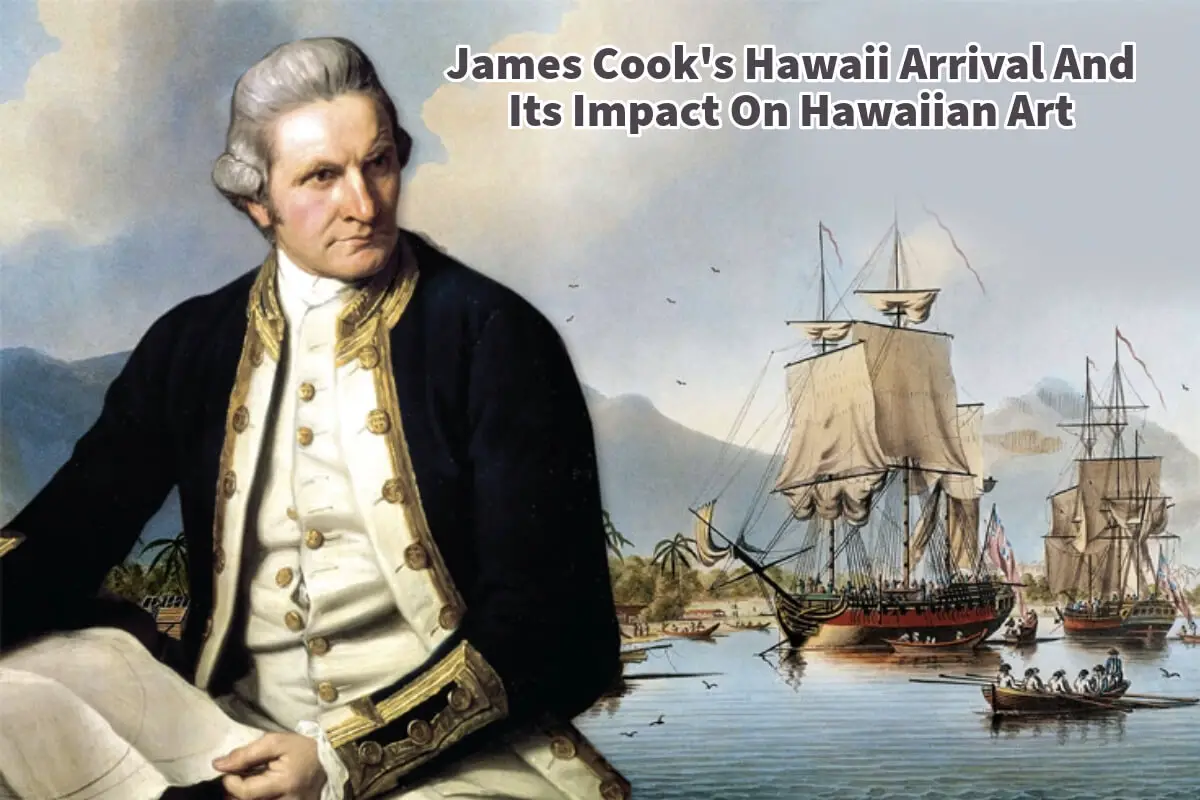Hawaii, a name that conjures images of lush landscapes, azure seas, and vibrant cultures, has a rich history deeply intertwined with its art. The islands we know today, beloved by tourists and locals alike, were vastly different before Captain James Cook arrived in the late 18th century.
Captain James Cook’s arrival to the Hawaiian islands marked the beginning of significant changes, influencing not just the geopolitical landscape but also the cultural and artistic tapestries of the Hawaiian Islands. Read on as we delve into James Cook’s life, the transformation of Hawaii following his arrival, and the profound impact on Hawaiian art, tracing its evolution from ancient times to the present day.
Table of Contents
- Who Was Captain James Cook?
- 3 Art Movements Of Hawaiian Art Defined
- The Evolution Of Hawaiian Art
- Related Questions
Who Was Captain James Cook?
James Cook, born in England in 1728, emerged as one of history’s most renowned British explorers, cartographers, and naval officers. Between 1768 and 1779, he made three significant voyages.

His most notable achievement was the “discovery” of the Hawaiian Islands, which had remained isolated from the world for at least 500 years. Hawaii was so isolated that even the other Polynesian islands had long forgotten about this group of islands.
That is why Cook’s arrival in Hawaii on January 18, 1778, was met with a mix of reverence; the native Hawaiians treated him and his crew as deities. However, eventually, they overstayed their welcome, and there were other issues. Soon, tensions escalated over time, leading to Cook’s demise on a Hawaiian beach in 1779 during a conflict over a stolen boat.
This moment marked the beginning of a profound transformation in Hawaii, particularly in its cultural and artistic landscapes. After James Cook and his crew first set foot in Hawaii, they returned to their homeland. However, their discovery of the Hawaiian Islands paved the way for significant European and American migrations to the islands.
These influxes of settlers led to the overthrowing of the Kingdom of Hawaii, culminating in Hawaii’s admission as a state of the United States in 1959. Since James Cook came to the Hawaiian Islands, the islands’ artistic landscape has never been the same.
3 Art Movements Of Hawaiian Art Defined
To understand Hawaiian art, it’s essential to examine it through three distinct stages: before James Cook’s arrival, the period immediately following his landing and the era shaped by European settlement among the Hawaiian natives.
The art and culture of pre-contact Hawaii differed vastly from what it became after Europeans started living amongst the Hawaiian people. Therefore, analyzing Hawaiian art and culture requires a nuanced appreciation of the changes instigated by Cook’s arrival and the subsequent European influence on Hawaiian art and culture.”
Hawaiian Art Before James Cook – Pre-European Hawaiian Art
Before European contact, the Hawaiian Islands thrived with a unique art tradition deeply embedded in the societal and spiritual fabric of the community. Ancient Hawaiian artisans, revered within their communities, created works that were more than mere objects of beauty; they were sacred rituals honoring their culture and deities.
These artists excelled in various mediums, including wood carvings, feather work, petroglyphs, bark cloth (kapa), and tattoos, all of which reflect ‘na hana noeau’ or ‘wise and skillful works.
Their art was a vessel of ‘mana’ (spiritual power) and ‘pono’ (righteousness), crafted from natural resources like kapa, lauhala, koa wood, and hulu manu (feather work), showcasing their profound connection to their environment.

Post-James Cook: The Transformation of Hawaiian Art
The influx of Europeans after Cook’s arrival ushered in a new era for Hawaiian art, blending Western materials and artistic sensibilities with traditional Hawaiian crafts.
This period gave rise to the Volcano School, an art movement captivated by Hawaii’s volcanic landscapes, and introduced new art forms, including quilting, that merged Western techniques with Hawaiian motifs.
This era signified a turning point, showcasing a fusion of cultures through art.
The Hawaiian Renaissance And Modern Expressions
The 20th century witnessed a renaissance in Hawaiian art as artists sought to merge modern influences with Hawaii’s cultural heritage. This period saw the adaptation of Art Deco styles, incorporating Hawaiian motifs in a modern visual language, and laid the foundation for a vibrant contemporary art scene.
Today, Hawaii’s art encompasses various media and styles, from traditional crafts to modern surf photography and fine art, reflecting the islands’ cultural diversity and rich heritage.

The Evolution Of Hawaiian Art
The story of Hawaiian art is a journey through time, encapsulating the islands’ rich cultural history, the melding of native and foreign influences, and the ongoing dialogue between tradition and modernity. This vibrant tapestry of artistic expression continues to evolve, capturing the imagination of both locals and visitors.
It is a narrative woven with threads of history, spirituality, resilience, and innovation, celebrating the diversity and unity of cultures coming together to create something uniquely beautiful.
The evolution of Hawaiian art is not merely a visual feast but a testament to the enduring spirit of Hawaii, inviting all to appreciate its depth and beauty. As we look forward to the future, Hawaiian art remains a captivating exploration of identity, tradition, and creativity, ensuring its place as a dynamic and evolving facet of Hawaiian culture.
Anita Louise Art is dedicated to art education, great artists, and inspiring others to find and create their art. We love art that uplifts and inspires. #ArtToMakeYouSmile! #ArtToMakeYouHappy!
If you are interested in seeing any of my art, you can find out more by clicking here. If you are interested in what inspires me and my paintings, you can discover more by clicking here.
We have a free newsletter and would love you to be part of our community; you can subscribe to the newsletter by clicking here. If you have any questions, I would be happy to talk to you anytime. You can reach me, Anita, by clicking here.
Subscribe to our Anita Louise Art YouTube Channel filled with great videos and information by clicking here.
Related Questions
36 Most Famous Paintings In Art History And Why They Matter
Over the years, art has been a key in almost every society and time frame. So, understanding art through the ages and some of the world’s most influential art is essential as life’s influence continues. Read on as we explore some of the world’s most influential art pieces.
By clicking here, you can learn more by reading 36 Most Famous Paintings In Art History And Why They Matter.
Art By Salvador Dali – Top 29 Paintings
Salvador Dalí’s artworks continue to fascinate and inspire, making him a timeless figure in art history. Whether you find yourself entranced by the dreamlike landscapes, the mind-bending distortions, or the profound themes, Dalí’s art remains an endless source of wonder and contemplation. Read on as we explore one of his top artworks.
By clicking here, you can learn more by reading Art By Salvador Dali – Top 29 Paintings.
A Canvas Of Words: 100 Inspiring Art Quotes From Great Minds
Art has been essential to human culture and society for thousands of years. It’s an expressive form of communication that transcends language, time, and geography barriers, allowing us to share emotions, perspectives, and visions of the world. Whether you’re an artist, an art lover, or simply someone who appreciates the power of a beautiful piece, there’s a universal language in art that speaks to us all.
By clicking here, you can learn more by reading A Canvas Of Words: 100 Inspiring Art Quotes From Great Minds.


